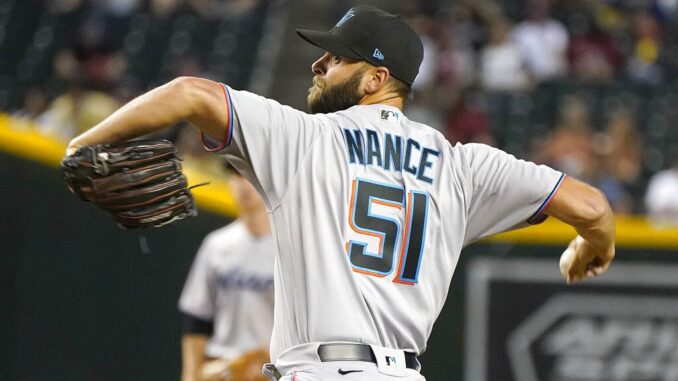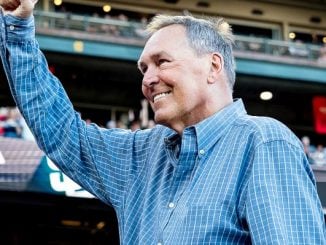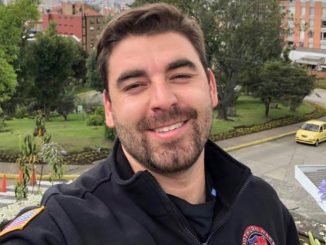
Before there was Cal Ripken Jr., there was Steve Garvey.
The Los Angeles Dodgers first baseman was a 10-time All-Star and league MVP, with his Hollywood good looks the perfect match for a player in Tinseltown. And, a little over 40 years ago, he appeared destined to eclipse the one record in the MLB ledgers thought to be unbreakable.
“One of the first books I read was a biography of Lou Gehrig,” Garvey recalled. “To read about him in depth about who he was, what he stood for, his contribution to the game and, of course, the consecutive game streak.”
Gehrig played in 2,130 straight games, a feat that no one came close to matching for a half-century.
“In 1975, I started my own consecutive games streak,” Garvey said. “These things don’t just come about. You don’t just say, ‘I’m going to start a streak.’ You have to be good enough (to play every day). You have to put it in God’s hands. I played through migraine headaches, the flu, pulled hamstrings. I still went out there. That’s what we do as professional baseball players.”
The streak lasted until 1983 when it ended due to an injury. Garvey finished at 1,207 games, nearly 1,000 shy of the record. “I’m so thankful because I understood what Lou Gehrig had gone through, the sacrifice,” he said.
No one knew it at the time, but Ripken was a little over a year into his own streak and would pass Gehrig more than a decade later.
While Garvey’s run at the record might be forgotten by most sports fans, his streak gave him a personal connection to Gehrig, which made his selection as MLB’s Lou Gehrig Day Ambassador this year all the more poignant.
“It’s an extraordinary honor,” Garvey said. “We’re all on a journey.”
Garvey’s took him within shouting distance of Gehrig’s mark, but it also put him on the same college team as a future victim of the disease that bears Gehrig’s name. Gehrig’s record-breaking streak ended when he came down with ALS, a fatal nerve disease that killed him at 37. One of Garvey’s teammates at Michigan State, Charlie Wedemeyer, died from the same disease.
“He lived into his 60s,” Garvey said of Wedemeyer. “He was a great inspiration. The disease has its own time and timetable.”
Garvey’s connection to the disease is just one of the many ways that MLB continues to be entwined with the ailment that took one of its biggest stars. Baseball celebrated the third annual Lou Gehrig Day last Friday. The event is held every June 2 — the day Gehrig made his MLB debut in 1925, and the day he died in 1941.
Tommy Nance, a pitcher for the Marlins, has seen the effects of the disease up close as his father battles it.
“My dad’s going on nine years,” Nance said. “He doesn’t want to talk about his diagnosis. He felt ashamed, whatever it might be, he kind of wanted to keep it to himself.”
Nance, however, has spoken out on behalf of his father, becoming active in raising awareness and funds to help fight the disease.
“It’s not a pretty disease,” he said. “It’s tough, and I struggle because I’m gone most of the year. I hardly see my family. I visit my family when the season’s over, and I see the progression more than the rest of my family because I’ve been gone months at a time.”
Phillies pitcher Aaron Nola and his brother Austin, a catcher for the Padres, identify with Nance’s struggle. They saw the disease slowly take their uncle, Alan Andries, who died in 2021 after a six-year battle. The brothers host their own Strike Out ALS event each offseason, and Aaron has met several patients during the work he does with the Phillies.
“I’ve met the ones who have had it for a month up to ones that have had it for 13 years. It’s sad for the families too. Nobody knows how long they’re going to get,” he said.
“When you leave and come back, you never know what the state your loved ones are going to be in,” brother Austin said, “because they’re struggling with just the way it goes.”
Aaron Nola said that the disease is underfunded, which is a rallying cry for two other notable sufferers of the disease: Sarah Langs and John Driskell Hopkins.
Langs is a longtime researcher for ESPN and MLB Network who announced her diagnosis of ALS last October and has become the modern face of Lou Gehrig’s disease.
“This is not a rare disease,” she said. “It’s just underfunded.”
Hopkins is a founding member of the Zac Brown Band, a staple at MLB stadium concerts. The band celebrated Lou Gehrig Day with a postgame show in Cincinnati following a Reds game.
“We are facing a disease that is not uncurable but grossly underfunded,” he said. “We need to make it first livable and then reverse it — stop it in its tracks the way we’ve stopped HIV. It used to be a death sentence 20 years ago, but it’s not anymore.”
Hopkins has created a charity that has raised more than a million dollars for ALS research. Among the projects it has supported are clinical trials at Duke University.
The hope is that progress will at last be made against a disease that has remained largely unchanged over the last eight decades.
“(Gehrig) passed 82 years ago,” said Phil Green, a former college kicker and ALS patient who is on the Lou Gehrig Day committee. “If he were diagnosed today, his prognosis would be very similar to what it was back then. … We want to make a difference so that people diagnosed with ALS tomorrow or five years from now have a different prognosis.”



